Reasons for damage to phosphate high alumina bricks
Jun 01, 2022
The service life of the transition zone and cooling zone in large and medium-sized kilns can be extended by 2 to 3 times compared with ordinary high-alumina bricks and can be extended by 3 times in small kilns. ~4x. If it is used for the firing belt, it can be extended by 1~2 times. Phosphate bonded wear-resistant bricks are used in cooling belts, which have better wear resistance and longer service life.
The practical results show that the service life of Phosphate Bonded High Alumina Bricks used as lining materials for waste incineration rotary kilns not only depends on the chemical mineral composition, organizational structure, and external dimensions of the brick itself but also depends on the kiln body structure, masonry technology, operation The method and the addition of cement raw materials, pulverized coal and chemical composition of garbage are related. The damage to the waste incineration rotary kiln has the following aspects.
1: Mechanical distortion and deformation damage
The deformation of the kiln body is due to the ovality of the section of the kiln wheel belt, the radial deformation of the kiln, and the huge torsional force of opening and stopping the kiln, which causes compression, bending, stretching, shearing, and other stress effects on the kiln lining of the cracks between the bricks and the bricks expand, resulting in damage to the overall structure of the brick surface. Thermal expansion is also an important reason for the damage of phosphate high alumina brick kiln lining materials. When the kiln is fired, the kiln lining and the kiln body expand, and the outward expansion of the kiln body section is less than that of the phosphate high alumina brick kiln lining, which makes phosphate The expansion of the hot surface of the high-alumina brick is hindered, causing a large area of the hot surface layer to burst and peel off. At the same time, the movement of garbage and cement materials will also, cause mechanical wear to the brick surface.
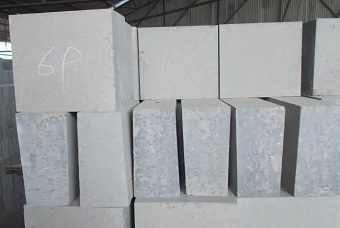
Two: thermal chemical erosion damage
The chemical erosion damage of Phosphate Bonded High Alumina Bricks is mainly caused by alkaline corrosion such as K2O and N2O in silicate, ferrite, and waste incineration ash, and secondary multimerization of brick weight is also the reason for the damage of Phosphate Bonded High Alumina Bricks. one.
Three: solid-phase reaction and infiltration of molten material
The temperature is 800 ℃ ~ 1200 ℃, and the solid phase reaction occurs between the lime and clay, the material, the ash powder, and the lining brick through the mutual diffusion between the surface solids. The specific surface area between lime and clay is much larger than that between material, ash, and brick lining, and its solid-phase reaction rate is much faster than that between lining brick and material. The mineral composition of phosphate high alumina brick is mainly mullite (3AL2O3 2SiO2) and corundum (AL2O3). The reaction between the lime component and the kiln lining of phosphate high alumina brick mainly generates CaO AL2O3 and CaO Fe2O3, and the solid phase reaction The chemical composition and structure of the surface of high alumina phosphate bricks were changed.
In the waste incineration cement rotary kiln, the molten material produced by high temperature infiltrates into the kiln lining brick, which embrittles the hot surface of the phosphate high alumina brick, and the thermal shock or mechanical stress causes the brick surface to burst and damage. Because the waste incineration in the kiln will cause the powder and alkali content of the material to be high, and the air temperature in the kiln is too high, the liquid phase will increase, which will cause the kiln skin on the surface of the brick body to burn and cause the red brick kiln to fall.
Four: Secondary mullite chemical
When the temperature in the kiln is too high, the SiO2 and phosphate in the material combine with the AL2O3 in the high alumina brick to form mullite, forming a recrystallized body, which expands the volume of the phosphate high alumina brick and causes the brick body to burst. Each rate value can not only improve the quality of the clinker but also improve the service life of the kiln lining.
Five: thermal stress shock damage
The temperature difference between the airflow and the material in the kiln is too large. During the rotation of the rotary kiln, there is a temperature difference of 300°C~500°C up and down, which increases the thermal load on the kiln lining of the Phosphate Bonded High Alumina Bricks, resulting in burst damage to the kiln lining Phosphate Bonded High Alumina Bricks. (1) High temperature overheating. If the incineration time of fuel such as garbage and pulverized coal is too long, the temperature is too high, and the liquid phase increases, which will easily increase the amount of liquid phase in the kiln, cause the kiln skin to burn, and cause local brick loss. Generally, the thickness of hanging kiln skin is controlled to be 150~200mm thick, which is relatively stable and will not be damaged by overheating. (2) Thermal shock stability. The high-temperature performance of Phosphate Bonded High Alumina Bricks improves the thermal shock stability, which is beneficial to hanging the kiln skin and protecting the kiln lining material from damage.
Relevant information
-
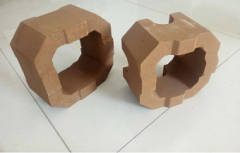
Main properties of magnesium oxide refractory
Performance characteristics of magnesia refractories and other basic refractories Performance characteristics of magnesia refractories and other basic refractories Refractories containing more than 80% ... -
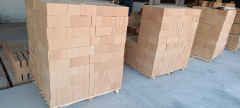
What properties of lightweight insulation fire clay bricks can be improved by the addition of kyanite?
Lightweight insulation fire clay bricks are a kind of shaped refractory material with clay as the main raw material, which is processed, shaped, dried, and calcined with clay. on the kiln. Due to the r ... -
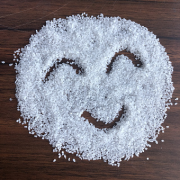
How is the effect of white fused alumina abrasive used in refractory materials?
After mixing, forming, drying, and firing at high temperature in a shuttle kiln. The product has the characteristics of high refractoriness, good thermal shock stability of white corundum, high high te ... -
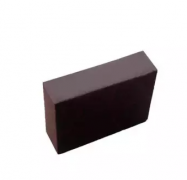
Characteristics of refractory magnesia chrome bricks for lime kiln
Lime kilns are mainly classified into square kilns and circular kilns. According to the classification of fired products, they can be divided into lime kilns, ceramic kilns, cement kilns, glass kilns, ...

